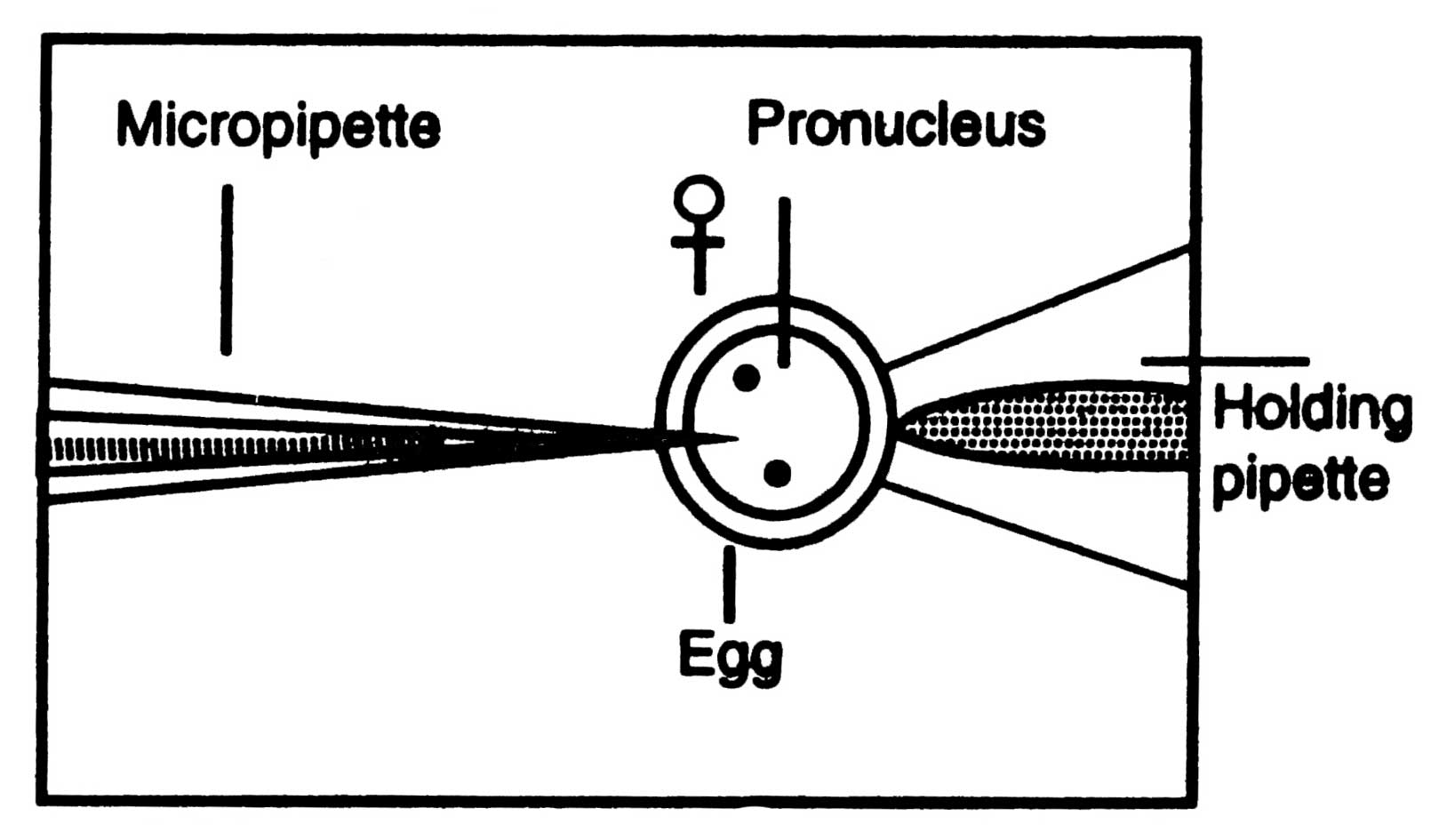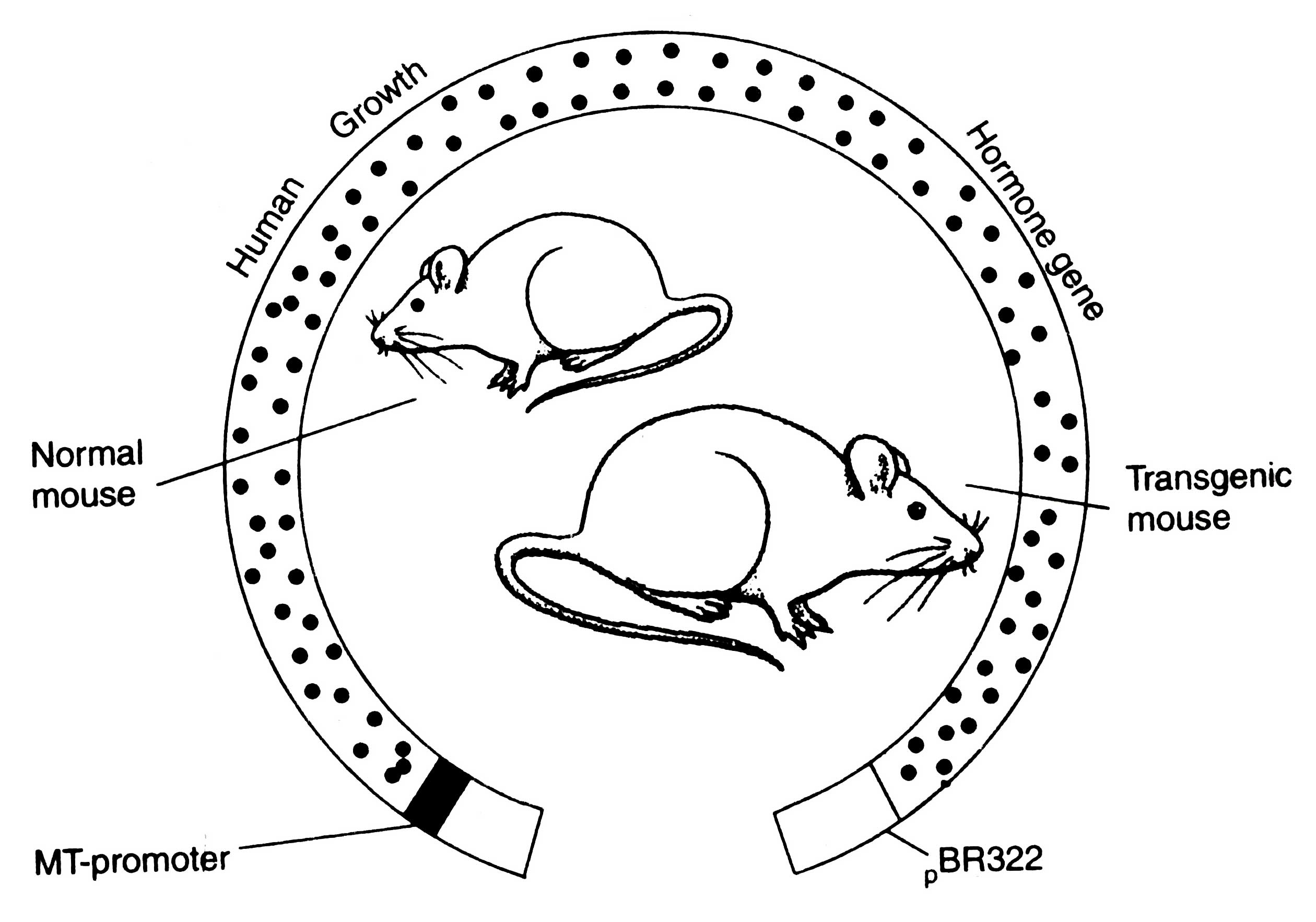Microinjection
Xenopus oocytes have been widely used for the study of transcription by microinjection because oocytes contain between 6,000 and 100,000 or more RNA polymerase molecules than somatic cells. Microinjection is technically easy because of large size of oocytes. Some of the endogenous pattern of gene regulation during development has been characterized (Wickens and Laskey, 1981). The injected DNA integrates randomly with nuclear DNA and its expression could be possible only when the foreign DNA is attached to a suitable promoter sequence. There are many examples where different types of animal cells have been microinjected and successfully transferred.
Production of Transgenic Animals
In 1982, R.D. Palmiter of Washington University and R.L.Brinter of Pennsylvanian University isolated the rabbit growth hormone (p-globin) gene, human growth hormone ((i-globin) gene as well as thymidine kinase gene and linked separately to the promoter region of mouse associated with the metallothionein I gene (a gene which encodes a metal binding protein). This was joined to pBR322 plasmid to produce the recombinant plasmids. Mature eggs from adult mouse were recovered surgically and fertilized with sperms in vitro.
In vitro fertilization (IVF) technology
The term in vitro means in glass or in artificial condition, and IVF refers to the fact that fertilization of egg by sperm occurs in glassware.
IVF technology in farm animals
Nowadays, exogenous hormones have been developed through naturally and recombinant DNA technology which are used to induce superovulation in farm animals. Superovulation is a phenomenon of producing greater than the normal number of eggs through hormonal treatment by a single female at a time.
A normal cow produces one or two eggs during an ovulatory period, whereas the same can produce 8-10 eggs when subjected to superovulation. Therefore, through normal reproduction, an animal produces about 4-5 offsprings in her life, while through IVF technology the same can produce 50-80 offsprings in her life. For a detailed description see Manipulation of Reproduction and Transgenic Animals.
IVF technology was pioneered in humans by Prof. Robert Winston. The same technique was used by P.Steptoe and R.Edwards to produce world's first test tube female baby, Louise J. Brown, on July 25, 1978. Since then more than 25,000 babies have been produced so far.
Earlier eggs were recovered from the patient's ovary by using laparoscope. A small incision is made just below the navel and the laparoscope is introduced. Eggs are removed with a hollow needle. Generally, only a single egg can be procured at a time after certain period in natural way. But through superovulation more eggs can be obtained at a time.
The hormone is injected daily for about 28 days. Sometimes side effects may take place. The eggs are kept in a special fluid and examined microscopically for any defects. Eggs are transferred into a Petri dish containing fresh semen. The gametes take 12-15 hours to fertilize. After fertilization zygote is kept in another fluid at the body temperature. Cell division is observed regularly. When embryo reaches to blastocyst stage, the last stage of growth, it is implanted into uterus. It is not necessary that all the implanted embryos will grow. There are many complications related to it after implantation. Therefore, to get success generally three embryos are transferred into the uterus at a time. This results in birth of one, two or three babies based on success. This process is called as zygote intrafallopian transfer (ZIFT). There is another technique where eggs and sperms are placed in fallopian tube to facilitate fertilization. This is known as gamete intrafallopian transfer (GIFT).
In addition to ZIFT and GIFT, the microinjection technique is also applied in oligospermic patients. Here, one sperm is directly injected into an egg to facilitate fertilization.
Problems related to test tube babies
Although the IVF technology is a boon to childless couples, yet there are several problems related to it, if it becomes commercialized. These problems may be religious, ethical, emotional or political. For example, the Catholic Church does not approve IVF technique as it proclaims that conception should never be taken out of the body. The GIFT is acceptable, while ZIFT is not. Muslim countries like Malaysia believe the sperm donation as immoral. Children borne of donated sperms are considered illegitimate. However, there is no controversy in India so far. In India the first sperm bank was set up in New Delhi in January, 1994 to help the childless couples.






